Back with another of the larger figures from Replica Toy Fish, this time the ‘six inch’ northern pike Esox lucius. This is a species that is familiar throughout a broad Holarctic range in cool waters across North America, Europe, and Russia, plus populations have been introduced in other areas as well. They are well known as sport fish and (in some places) food fish, and in some Arctic lakes may be the only large fish due to their voracious and aggressive appetites. Despite this familiarity, they are oddly uncommon as figures or toys, even though they also have a fairly distinctive, aggressive appearance that seems like it would appeal to kids.
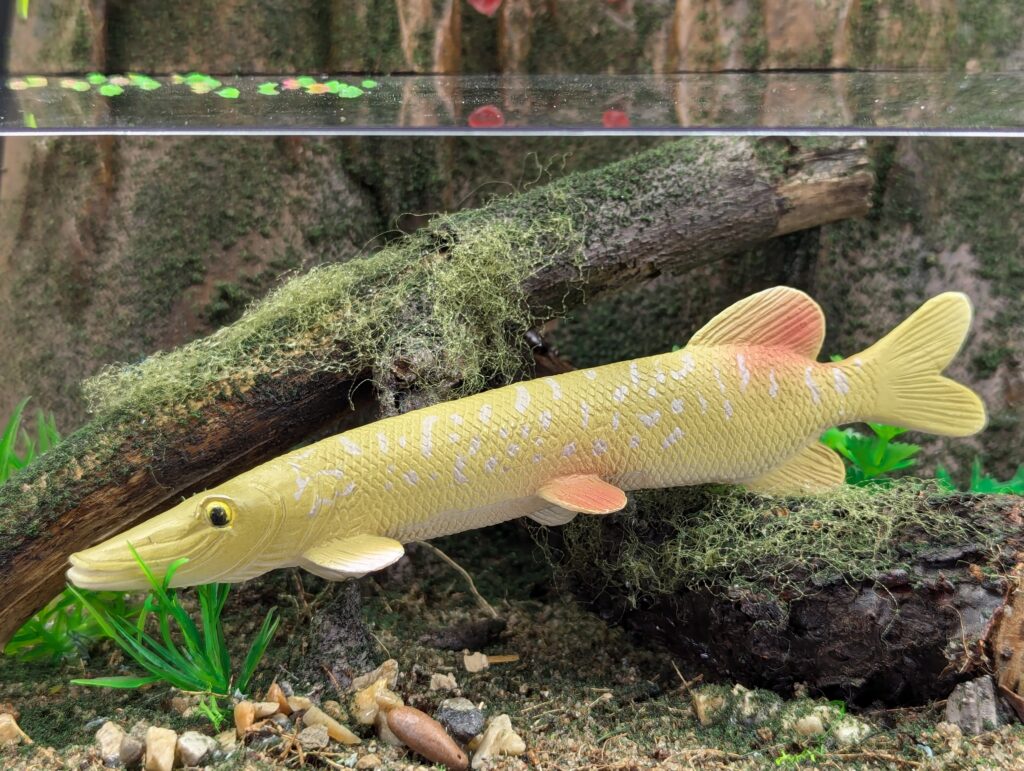
In fact, it was the desire for just such a toy that lead to Replica Toy Fish in the first place (his son wanted a northern pike toy, and the closest available were realistic fishing lures–hooks removed). I said it before, but with the change from Replica Toy Fish to Toy Fish Factory, I think something was lost, as the large figures tended to be very popular. I will be doing this one, and the next six inch fish, in advance of the second half of the Northwoods set, since the species show up there too!
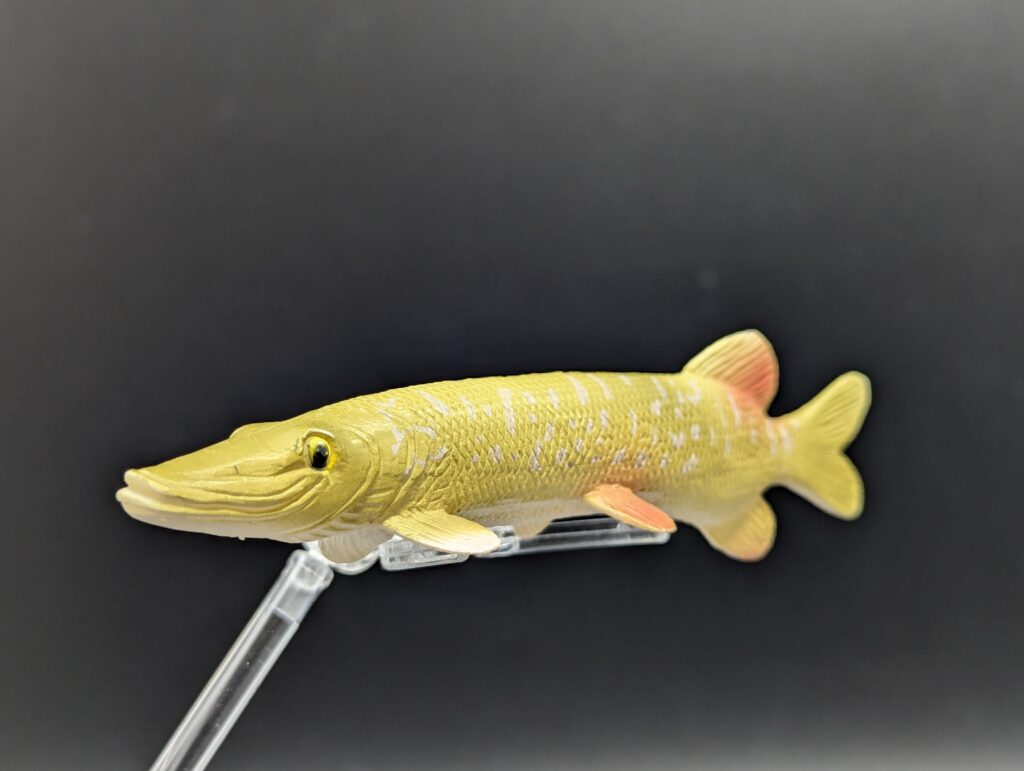
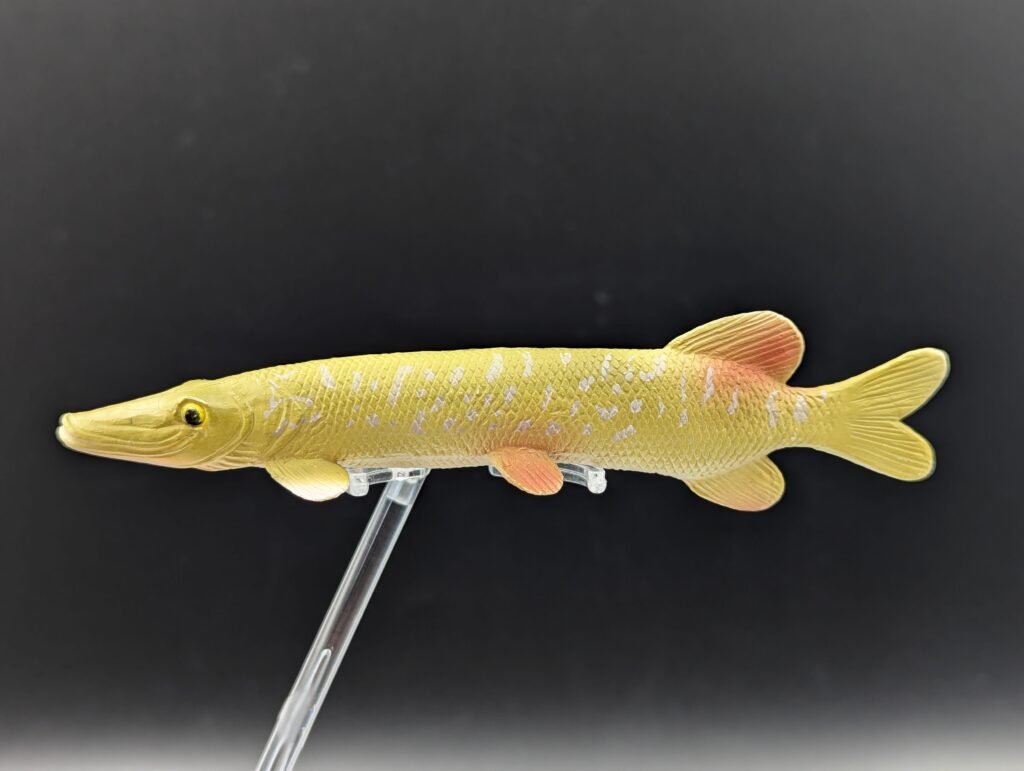
Northern pike are one of many species in the family Esocidae, the pikes and pickerels, but no other species ranges as broadly. As a group, they all tend to be long and spear-like (or…pike-like, hence the name) with tubular bodies, broad tails, and pointed snouts containing lots of very sharp teeth. This suits their usual mode of predation, as ambush predators, hiding in weeds or other cover and using a ‘fast start’ burst of speed to rapidly overtake and consume prey. The ‘fast-start’ is usually used by fish to evade predators, as it is a fairly unsteady mode of swimming but allows quick escape, but pike have adapted it to a hunting strategy! It is also a predation mode that is primarily visual, so northern pike tend to be primarily active in the day. Their prey consists of…pretty much anything that fits, and in some places, that can be nearly anything, as a very large specimen could be up to 150cm (almost 5 feet) long; they are more commonly 40-55 cm (16-22 inches) long, with females growing larger. The primary prey is fish, with invertebrates and amphibians taken where possible; as they grow larger, they will attempt even larger prey like birds or, in at least one recorded instance, a small dog (likely meaning other small mammals are on the menu too). They will also cannibalize smaller individuals, so part of their aggressive predation may be to grow quickly enough to outpace their fellow northern pike as food!
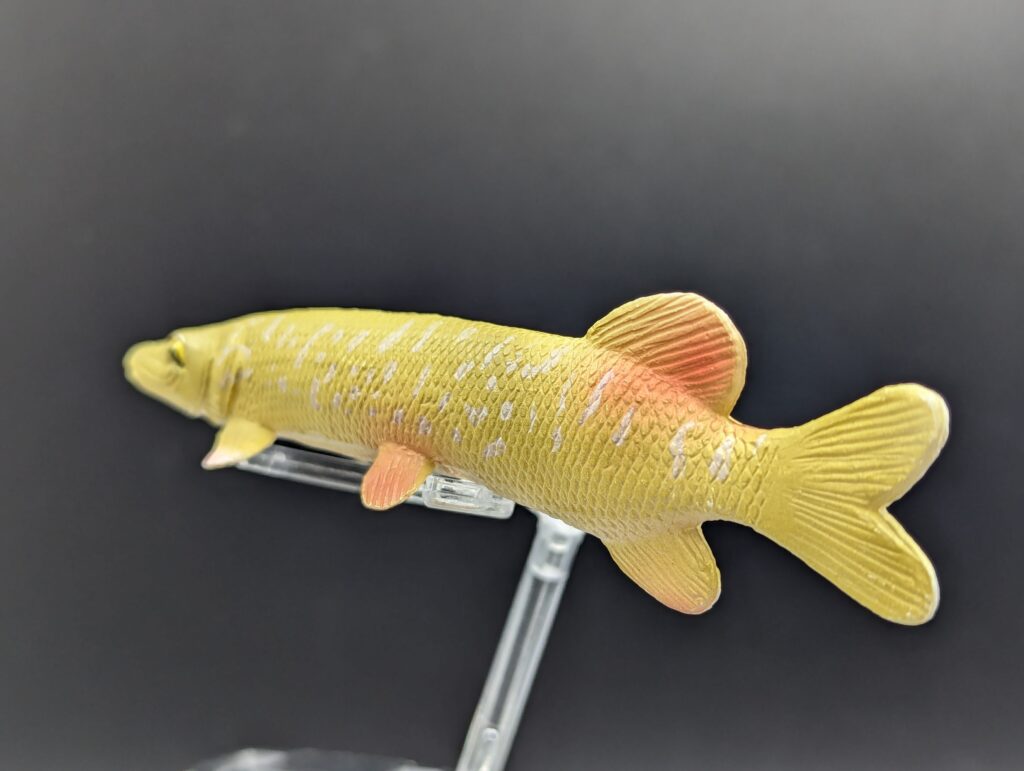
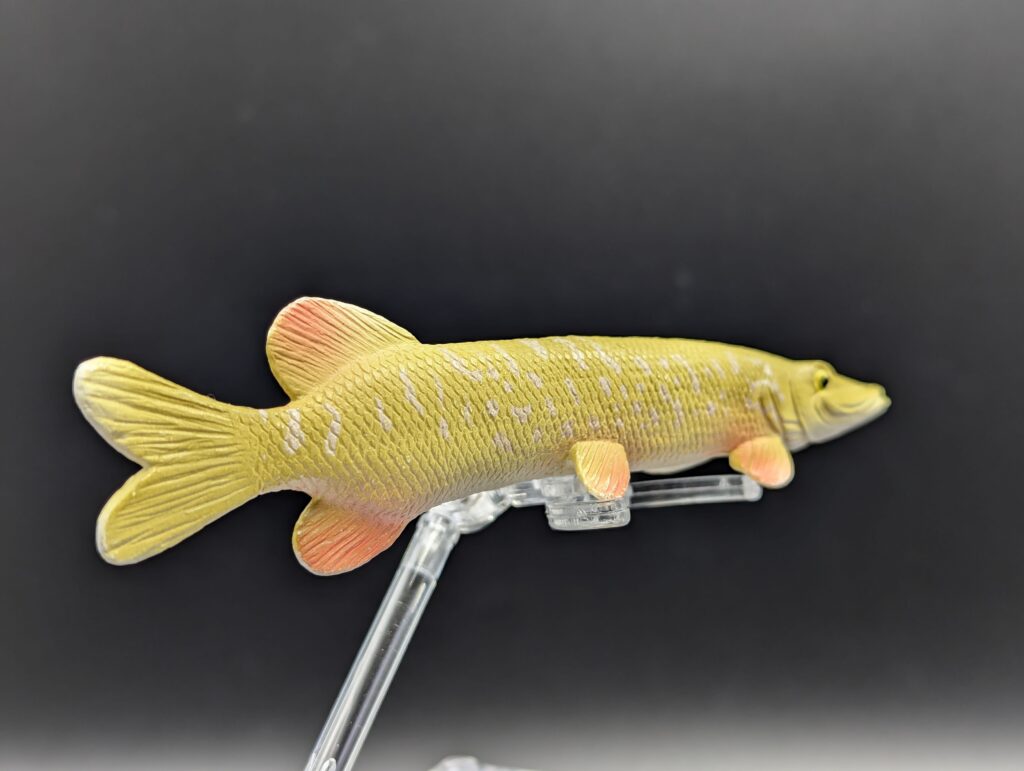
Northern pike are also fairly territorial, adding to their aggressive nature, but can also been seen moving together in ‘wolf packs’ while hunting prey; it’s probably location dependent, and northern pike are in a lot of locations! They prefer cooler and clearer waters, but beyond that will inhabit any available weedy ponds and reservoirs as well as clear rocky streams as long as prey is available. The key for northern pike seems to be vegetation, as this is necessary for their ambushing strategy and cover for their fry; the vegetation and cover is probably what factors into the preference for slower and clearer waters, as opposed to actual water condition preference. Northern pike are almost always strictly freshwater except for parts of the Baltic Sea, where they spend some time in the less salty shallows at the mouths of rivers before returning upstream to fresher water, but overall are non-migratory. In recent years, a few European populations of northern pike have been determined to be separate species based on genetics and morphology (the southern pike Esox cisalpinus and Aquitanian pike E. aquitanicus) but their range is still impressively huge, and while some areas have seen impacts for various reasons they are listed as Least Concern by the IUCN.

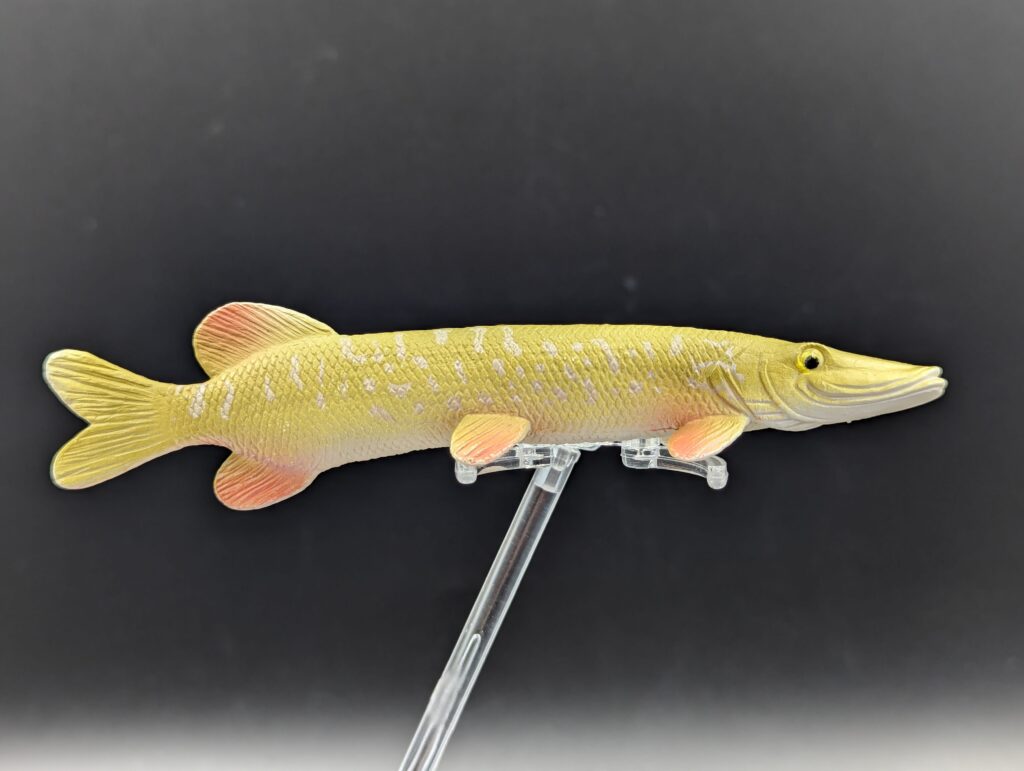
The figure itself is a pretty chunky tube, with the appropriate long tubular body and pointed, scooped face. It is 14cm, or 5.5 inches, long, and given the overall hefty appearance, could probably be considered one of the massive individuals at a scale of 1:11; assuming a more common 75cm would be about 1:5 scale. The mouth is sculpted to be broad, with thick margins around the lips and several indents at the throat, indicating a fish that can open it’s mouth wide. The eyes are sculpted to be large and wide, picked out in black, and several opercular folds are present around the back of the head. The body itself is incised with many fine but distinct cycloid scales along the entire body, including the back and the belly. All fins are positioned away from the body, with the pectoral and pelvic fins splayed outward. The dorsal fin is set far back, just before the caudal peduncle, and is appropriately rounded (this becomes important for later figures…) Opposite the dorsal fin, the anal fin is positioned below, on a slight bulge at the poster of the belly. The tail fin is homocercal, with widely-spaced lobe with rounded tips. All fins demonstrate fine fin rays throughout.
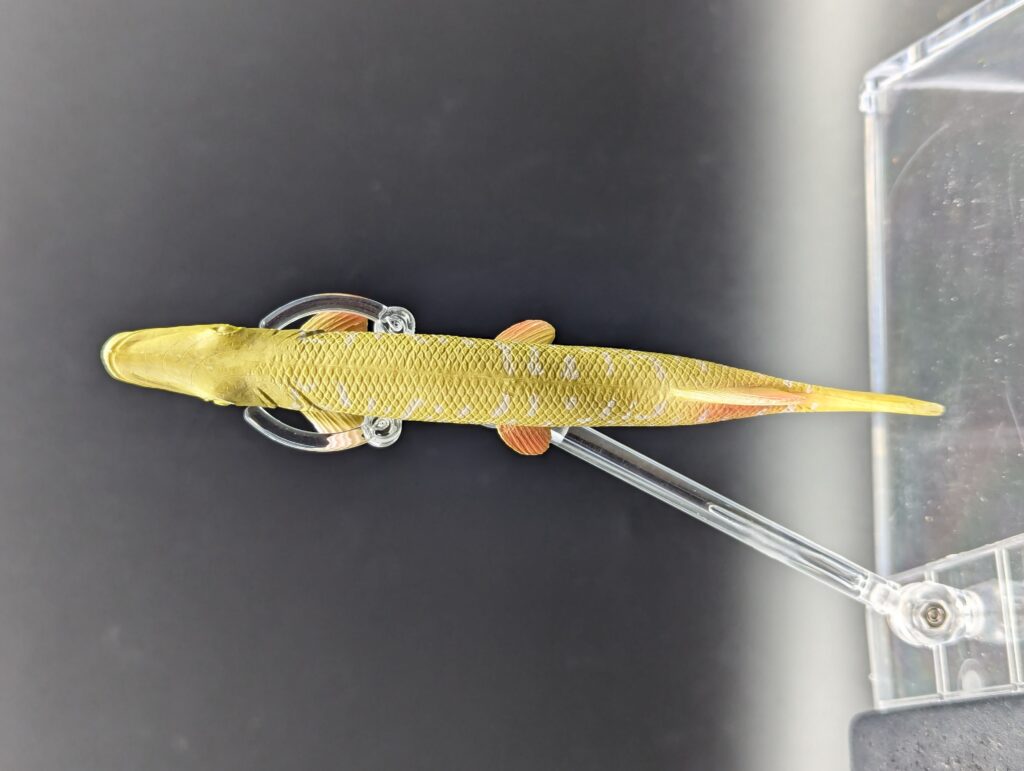
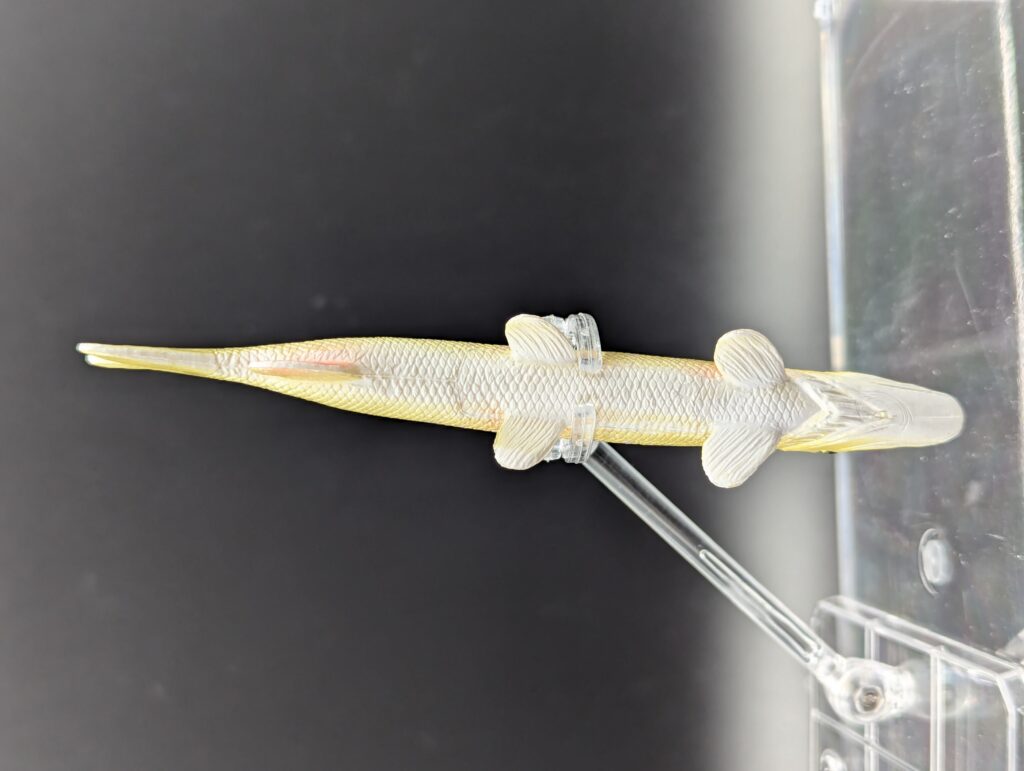
The colouring is fairly basic compared to what northern pike can demonstrate, as there are a lot of variations. The overall colour is a light green across the dorsum and sides, fading toward the margin of the belly, which is all white. Across the sides are numerous white markings, some more dot-like, others more vermiculated or blotchy. Northern pike can range from light to dark green, with white stripes, squiggles, bars, spots, or combinations of these; the pattern on the RTF figure is more likely indicative of a very large adult, which can see some fading of the markings. Or, it was just easier for the painter… The fins are variable, with various amounts of pink highlights on the fins; on the right, all ventral fins are very pink, while they are anywhere from pretty much just green (anal fin) to green and white (pectoral) to very pink (pelvic) on the left. The dorsal fins has a roughly symmetrical splash of pink on both sides. On the most painted fins there is some spreading of the paint onto the body; while red or reddish fins can be found on northern pike, this colour should not be on the body, so it’s just paint application issues.
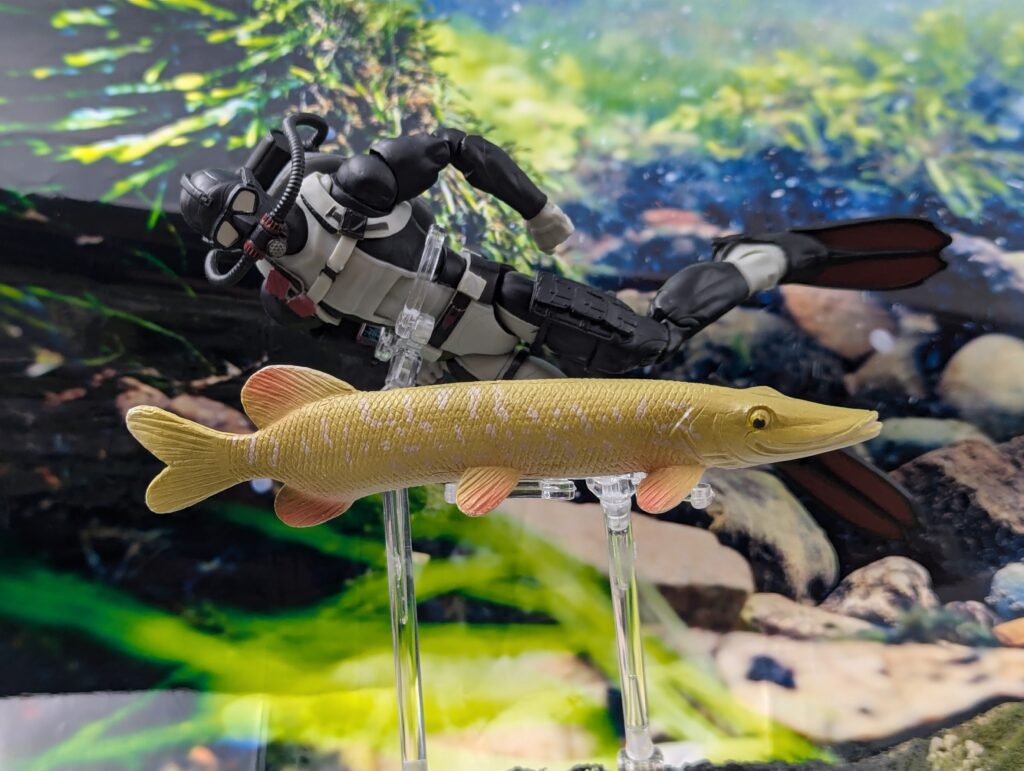
Overall, this is a pretty good representation of a northern pike; the paint is a bit basic, but the sculpt is very well done. It would be great to see someone else take on the species, maybe with something more dynamic, and definitely in this size range. The only other larger one I know of is the Bullyland and it’s discontinued too; otherwise, just the small Toy Fish Factory and a very old little one, I think from Elastolin. It’s definitely a species with a broad range of both familiarity and appeal, and the only representatives can’t just be plush (yeah, those are out there too).
Bonus variation!

I mentioned in the previous post, the first 3 figures from the Northwoods set, that I received a number of models that probably represented test paints or repaints meant to represent other species. One model that I received was a repaint of the 6 inch northern pike, one that put a whole lot more colour to the figure. In this instance, I’m not sure if they were trying to emulate a leopard pike pattern (which is usually more grey than green, but often with white spots) or just reflect a very different, more dramatic pattern. I think it’s the latter.
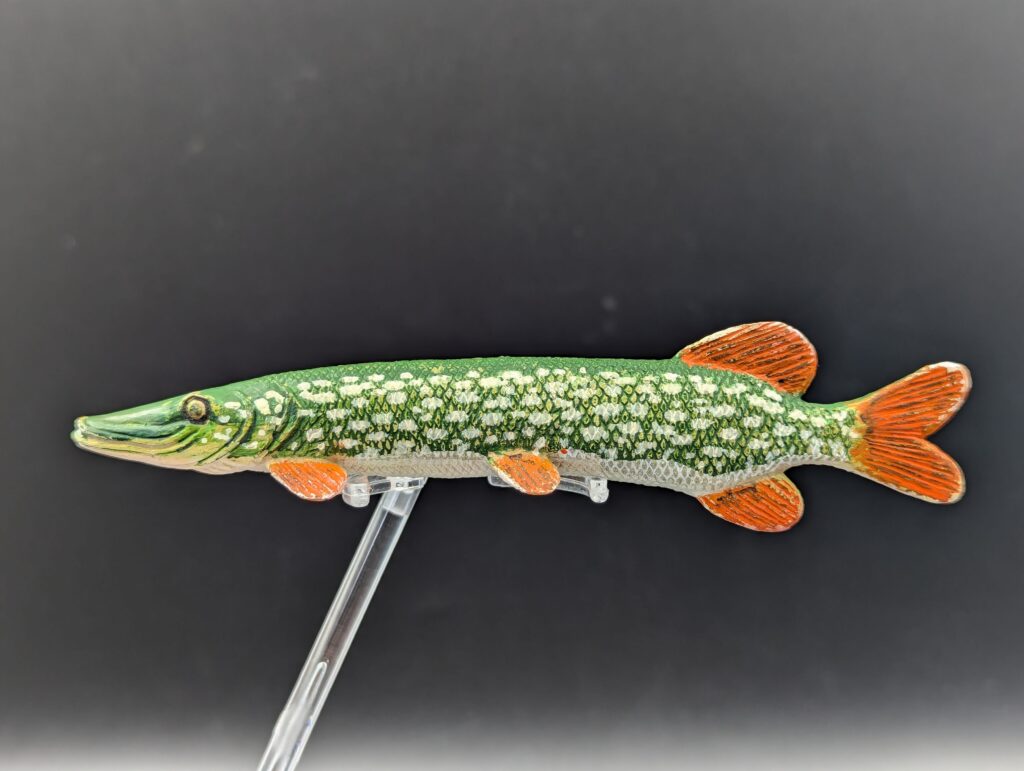
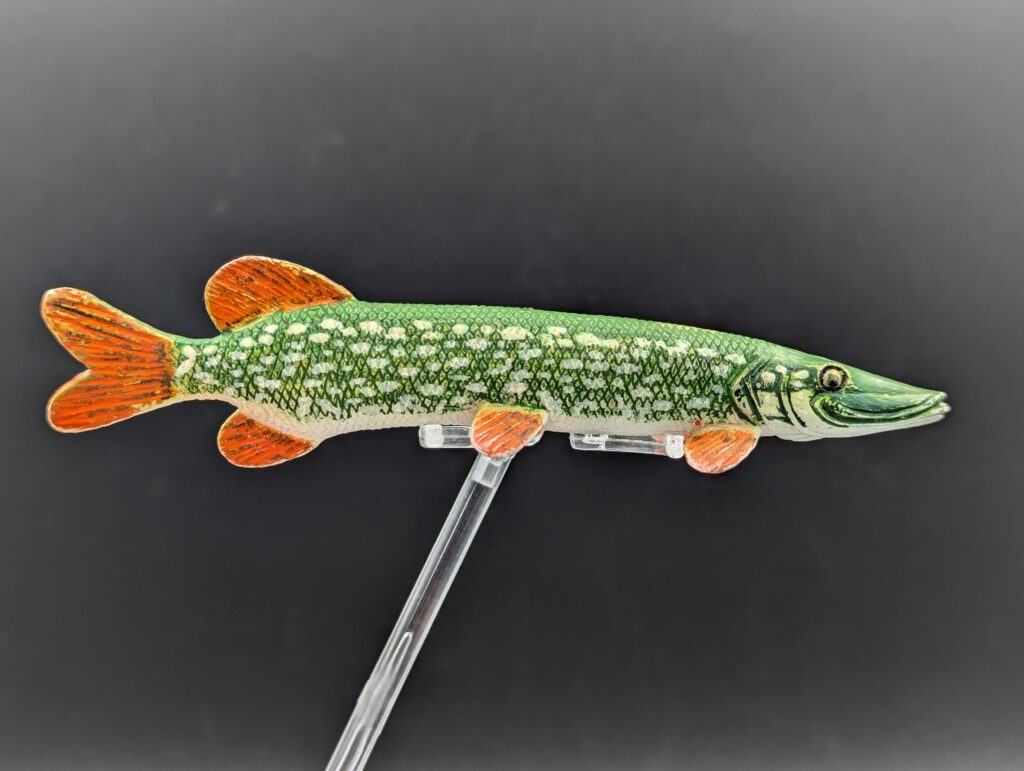
In this case, the base colour is a very deep green, solid on the dorsum and head, with a large number of white horizontal dashes on the sides from the opercula to the peduncle. The fins are all picked out very distinctly in an almost crimson red, with the rays highlighted in black. The underside remains white, but the underside of the paired fins have been painted in the red (no black). The eyes are also painted more completely black, with a subtle gold overtone. Overall, it’s an impressive improvement on the figure, although I’m guessing that as a toy, this job would have been more costly. The figure in this scheme has a more typical appearance as seen in much of the artwork used in identification guides, a likely inspiration.
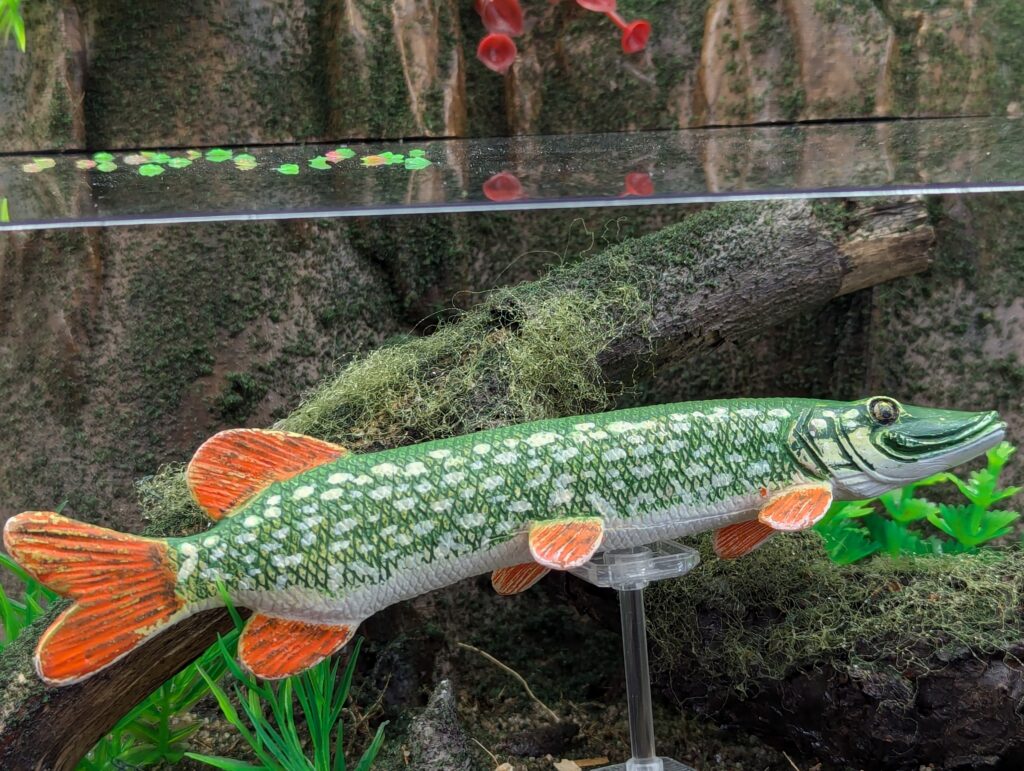
Disclaimer: links to Ebay and Amazon on the AnimalToyBlog are affiliate links, so we make a small commission if you use them. Thanks for supporting us!



